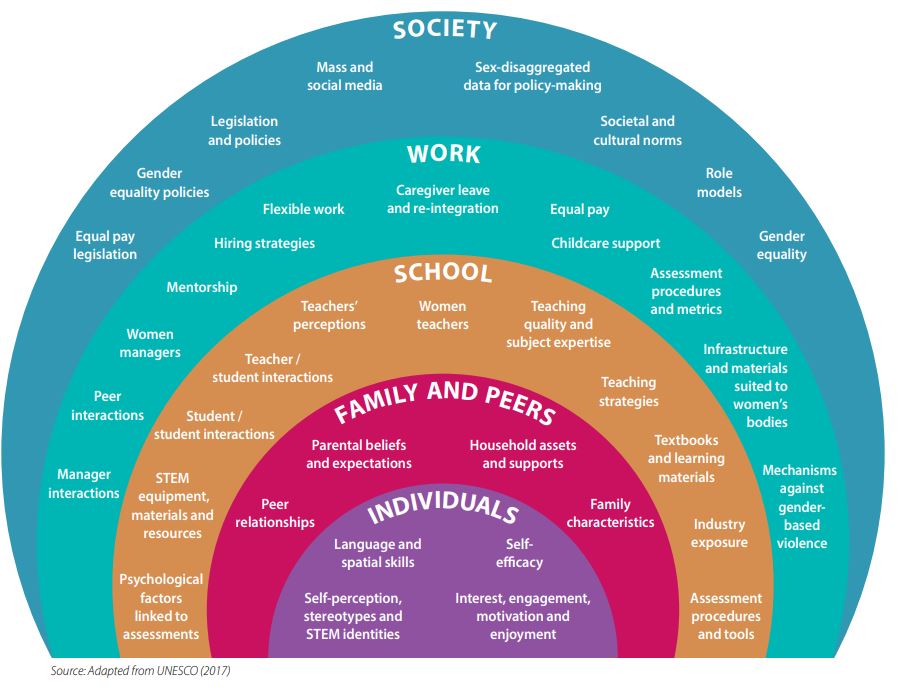
Report on Gender Wealth Gap and Sustainable Development Goals
Introduction
The gender pay gap extends beyond current earnings, significantly impacting women’s long-term savings, retirement income, and financial security. Addressing these disparities aligns closely with the United Nations Sustainable Development Goals (SDGs), particularly SDG 5 (Gender Equality) and SDG 8 (Decent Work and Economic Growth). This report synthesizes recent research and policy discussions on gender wealth disparities, emphasizing strategies to promote equitable financial outcomes for women globally.
Pension Wealth Disparities and SDGs
Research highlights significant gender gaps in pension wealth, a critical component of long-term financial security.
Key Findings from Europe and the UK
- European Journal of Population Study (2022): Analysis in Germany reveals gender gaps in statutory, civil, and occupational pensions, with occupational pensions showing the largest disparity (41.8%). Differences in labor market participation, earnings, and employment contracts contribute to these gaps.
- Institute for Fiscal Studies (IFS) UK Report (2023): While the state pension income gap has narrowed, private pension savings still show significant disparities due to earnings differences, employment patterns, and caregiving responsibilities.
These findings underscore the need for targeted policy interventions consistent with SDG 1 (No Poverty) and SDG 10 (Reduced Inequalities).
Lower Earnings Potential and Lifetime Wealth
Lifetime earnings disparities contribute to the gender wealth gap, affecting women’s ability to accumulate wealth and invest for retirement.
Factors Influencing Earnings and Wealth Accumulation
- Leadership and promotional barriers
- Maternity leave and career interruptions
- Salary negotiation gaps
- Unpaid care work disproportionately borne by women
According to analysis by Investors Observer, women in the US lose approximately $1 million in retirement wealth due to the gender wage gap. These issues relate directly to SDG 5 and SDG 8, emphasizing the importance of equal pay and decent work conditions.
Representation at Leadership Levels
Women remain underrepresented in senior and C-suite roles, despite increasing presence in high-paying sectors.
Challenges Identified
- Career interruptions due to caregiving responsibilities
- Structural and social barriers to leadership positions
- Workplace cultures that do not support family formation
Addressing these challenges supports SDG 5 by promoting gender equality in leadership and decision-making roles.
Eroding Earning Potential Through Negotiation Gaps
The “negotiation gap” where women are less likely to negotiate salaries leads to compounded lifetime earnings losses.
Impact on Retirement Savings
- Small annual differences in salary and retirement contributions accumulate over a 40-year career.
- Mid-career breaks can result in hundreds of thousands of dollars less in retirement savings.
These financial disparities highlight the need for policies that support continuous career development and financial literacy, aligning with SDG 4 (Quality Education) and SDG 10.
Role of Higher Education
Women now outnumber men in college and postgraduate enrollments, which correlates with higher lifetime earnings.
Policy Recommendations
- Government matching or top-ups for low-income earners
- Universal retirement accounts with contributions during unpaid leave
- Caregiver credits recognizing unpaid labor
These interventions can mitigate the impact of career interruptions on women’s retirement savings and promote SDG 1 and SDG 5.
Corporate and Public Sector Roles
Global companies often have inconsistent pay policies across jurisdictions, exacerbating gender pay gaps.
Strategies for Redress
- Standardizing mobility and pay policies across genders and locations
- Adopting transparent and predictable pay structures inspired by the public sector
These strategies contribute to SDG 8 by fostering inclusive and equitable workplaces.
Financial Literacy and Economic Resilience
Financial literacy is crucial for lifetime wealth accumulation and retirement preparedness.
Key Points
- Understanding retirement savings options such as 401(k) plans improves financial outcomes.
- Women are disproportionately affected by economic shocks due to overrepresentation in vulnerable sectors.
Enhancing financial education supports SDG 4 and SDG 8 by empowering individuals to make informed economic decisions.
Rethinking Work and Retirement Systems
Current retirement systems favor linear, full-time employment and inadequately account for non-linear career paths common among women.
Recommendations
- Incorporate career interruptions and unpaid care work into pension formulas
- Recognize longer life expectancy and part-time work patterns in retirement planning
- Promote societal values that support family formation and unpaid work recognition
These changes align with SDG 5 and SDG 10 by promoting social inclusion and reducing inequalities.
Progress in the UK and Europe
Significant strides have been made in narrowing the gender pay gap through legal and policy measures.
Notable Initiatives
- UK Mandatory Gender Pay Gap Reporting (2017): Improved transparency and accountability, reducing the median pay gap from 9.1% in 2017 to 7% in 2024.
- European Commission Gender Equality Strategy (2020–2025): Focuses on closing the gender pay gap and promoting pay transparency.
- EU Pay Transparency Directive (2023): Requires disclosure of salary ranges and action on pay gaps exceeding 5%.
- Country-Specific Measures: Iceland mandates equal pay certification; Nordic countries benefit from strong welfare systems and shared parental leave.
These efforts contribute directly to SDG 5 and SDG 16 (Peace, Justice and Strong Institutions) by fostering equality and transparency.
Remaining Challenges
- Motherhood penalty leading to reduced workforce participation
- Prevalence of part-time, low-paid work among women
- Need for structural reforms such as affordable childcare and flexible senior roles
Conclusion
Closing the gender wealth gap requires integrated approaches that address pay disparities, career interruptions, leadership representation, and financial literacy. These efforts are essential to achieving the Sustainable Development Goals, particularly SDG 5 (Gender Equality), SDG 8 (Decent Work and Economic Growth), and SDG 10 (Reduced Inequalities). Policymakers, corporations, and society must collaborate to create equitable systems that recognize and value women’s diverse career paths and contributions.
Additional Resources
For further information and resources related to gender equality and workplace inclusion, visit the Think Global Women Resources.
1. Sustainable Development Goals (SDGs) Addressed or Connected
- SDG 5: Gender Equality
- The article focuses extensively on gender pay gaps, pension wealth disparities, and underrepresentation of women in leadership roles, directly relating to achieving gender equality and empowering all women and girls.
- SDG 8: Decent Work and Economic Growth
- Issues such as wage disparities, employment patterns, career interruptions, and workplace policies relate to promoting sustained, inclusive economic growth, full and productive employment, and decent work for all.
- SDG 10: Reduced Inequalities
- The article discusses income inequality, wealth gaps, and structural barriers affecting women’s financial security, which ties into reducing inequalities within and among countries.
- SDG 4: Quality Education
- The article mentions higher education attainment by women and the importance of financial literacy, linking to inclusive and equitable quality education and lifelong learning opportunities.
2. Specific Targets Under Those SDGs
- SDG 5: Gender Equality
- Target 5.1: End all forms of discrimination against all women and girls everywhere.
- Target 5.5: Ensure women’s full and effective participation and equal opportunities for leadership at all levels of decision-making in political, economic, and public life.
- Target 5.4: Recognize and value unpaid care and domestic work through the provision of public services, infrastructure, social protection policies, and the promotion of shared responsibility within the household.
- SDG 8: Decent Work and Economic Growth
- Target 8.5: Achieve full and productive employment and decent work for all women and men, including young people and persons with disabilities, and equal pay for work of equal value.
- Target 8.6: Reduce the proportion of youth not in employment, education, or training.
- SDG 10: Reduced Inequalities
- Target 10.2: Empower and promote the social, economic and political inclusion of all, irrespective of age, sex, disability, race, ethnicity, origin, religion or economic or other status.
- SDG 4: Quality Education
- Target 4.3: Ensure equal access for all women and men to affordable and quality technical, vocational and tertiary education, including university.
- Target 4.4: Increase the number of youth and adults who have relevant skills, including technical and vocational skills, for employment, decent jobs, and entrepreneurship.
3. Indicators Mentioned or Implied to Measure Progress
- Gender Pay Gap Metrics
- Median pay gap percentages (e.g., 7% median pay gap in the UK in 2024, down from 9.1% in 2017).
- Gender pension wealth gap percentages (e.g., 35% less private pension wealth for women in Britain by age 55).
- Proportion of women in leadership and C-suite roles.
- Employment and Earnings Data
- Differences in lifetime earnings and pension savings between men and women.
- Rates of career interruptions and unpaid caregiving periods affecting earnings and retirement savings.
- Participation rates of women in higher education and professional sectors.
- Policy Implementation and Transparency
- Compliance with mandatory gender pay gap reporting (e.g., companies with over 250 employees in the UK).
- Employer disclosure of salary ranges and pay differentials under the EU Pay Transparency Directive.
- Legal enforcement of equal pay laws (e.g., Iceland’s requirement for companies to prove equal pay).
- Financial Literacy and Retirement Savings
- Rates of participation in retirement savings plans (e.g., 401(k) contributions).
- Levels of financial literacy related to investment and retirement planning.
4. Table of SDGs, Targets, and Indicators
| SDGs | Targets | Indicators |
|---|---|---|
| SDG 5: Gender Equality |
|
|
| SDG 8: Decent Work and Economic Growth |
|
|
| SDG 10: Reduced Inequalities |
|
|
| SDG 4: Quality Education |
|
|
Source: relocatemagazine.com







